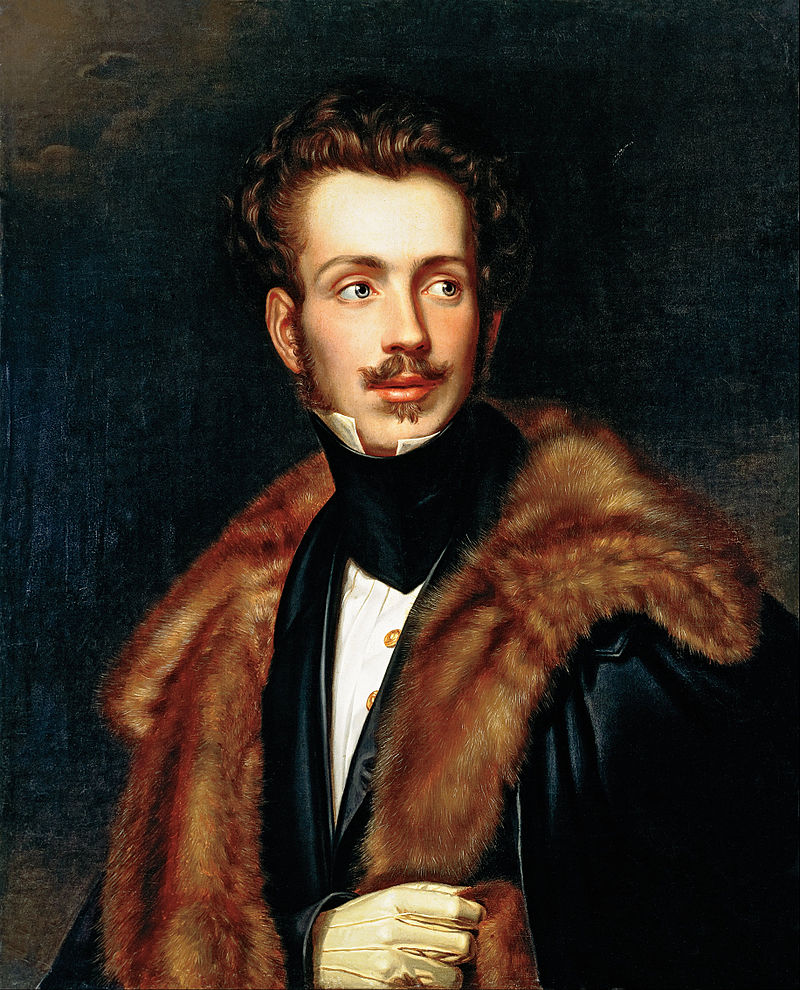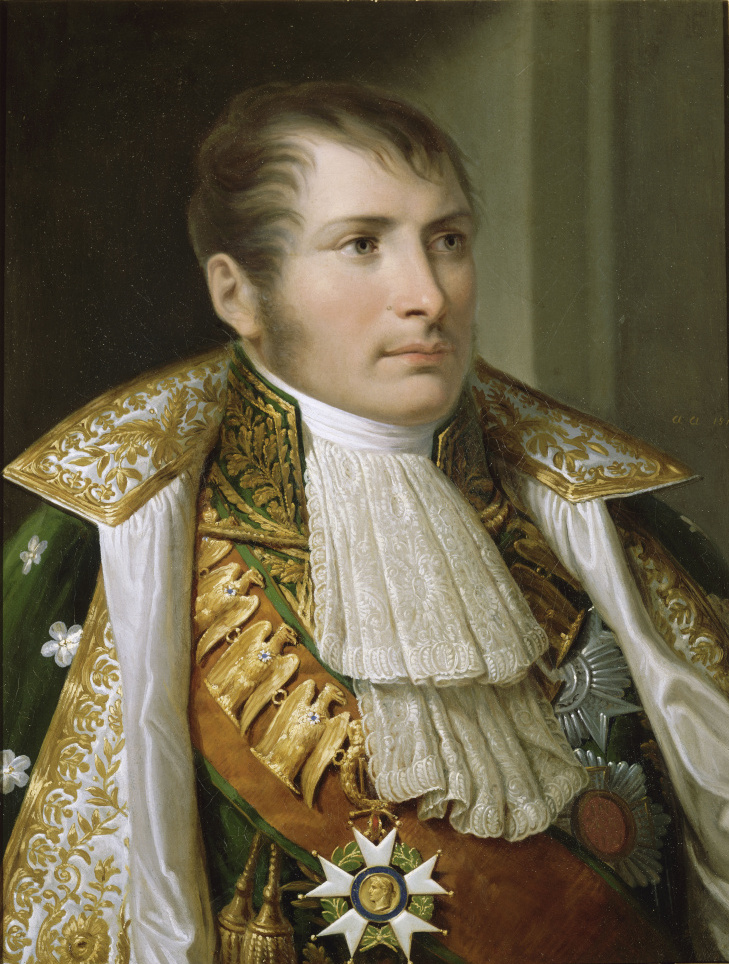by Scott Mehl © Unofficial Royalty 2016

Auguste de Beauharnais, Duke of Leuchtenberg, Prince Consort of Portugal; source: Wikipedia
Auguste Charles Eugène Napoléon de Beauharnais was born on December 9, 1810, at the Royal Villa of Monza, just outside Milan, (Napoleonic) Kingdom of Italy. He was the eldest son of Eugène de Beauharnais and Princess Augusta of Bavaria, a daughter of King Maximilian I of Bavaria.
Auguste had six siblings:
- Joséphine de Beauharnais, Princess of Leuchtenberg (1807-1876) – married King Oscar I of Sweden, had issue
- Eugénie de Beauharnais, Princess of Leuchtenberg (1808-1847) – married Friedrich, Prince of Hohenzollern-Hechingen, no issue
- Amélie de Beauharnais, Princess of Leuchtenberg (1812-1873) – married Emperor Pedro I of Brazil, had issue
- Theodelinde de Beauharnais, Princess of Leuchtenberg (1814-1857) – married Wilhelm, Count of Württemberg (later Duke of Urach), had issue
- Carolina de Beauharnais (born and died1816) – died in infancy
- Maximilian de Beauharnais, Prince of Leuchtenberg (1817-1852) – married Grand Duchess Maria Nikolaevna of Russia, had issue
Auguste’s father Eugène was the son of the French Empress Joséphine from her first marriage, and therefore a stepson of Emperor Napoleon I. In 1804, Napoleon made Eugène an official member of the Imperial Family, but without succession rights to the French throne. Two years later, Napoleon formally adopted Eugène, named him as heir-presumptive to the Kingdom of Italy, and gave him the title Prince of Venice. However, Eugène lost those titles and his political expectations following Napoleon’s defeat, and the Congress of Vienna in 1815. Two years later, his father-in-law, King Maximilian I of Bavaria, created him Duke of Leuchtenberg and Prince of Eichstätt.

Auguste’s father, Eugène de Beauharnais, Duke of Leuchtenberg. Portrait by Andrea Appiani, 1810. source: Wikipedia
Auguste succeeded his father as Duke of Leuchtenberg and Prince of Eichstätt in 1824. Several years later, his sister Amélie became the second wife of Emperor Pedro I of Brazil. Following a marriage by proxy in August 1829 at the Palais Leuchtenberg in Munich, Auguste accompanied Amélie to Brazil, and settled in Rio de Janeiro, taking up residence at the Imperial Palace. He quickly became close with his new brother-in-law (and future father-in-law), who created him Duke of Santa Cruz on November 5, 1829. The Emperor also raised Auguste to the style of Royal Highness within Brazil.

Queen Maria II of Portugal. source: Wikipedia
After Emperor Pedro I’s abdication in 1831, they all returned to Munich in the Kingdom of Bavaria, while Emperor Pedro joined the fight to restore his daughter Maria to the Portuguese throne, which took place in 1834. Soon after, Emperor Pedro chose Auguste to be his daughter’s husband. The couple was married by proxy on December 1, 1834, and Auguste was created Prince Consort by his new wife. Upon his arrival in Portugal, they married at the Lisbon Cathedral on January 26, 1835.
Sadly, their marriage was to be very short-lived. On March 20, 1835, Auguste complained of a sore throat but refused to see a doctor. By March 23, 1835, his condition worsened, and he finally consented to see a doctor. Within days, his condition became extremely grave, doctors told the family there was no hope, and Auguste was given the last rites. Auguste died on March 28, 1835, at the Palace of Necessidades in Lisbon, Portugal, at the age of 24, most likely from diphtheria. He is buried at the Monastery of São Vicente de Fora in Lisbon. He was succeeded as Duke of Leuchtenberg by his younger brother Maximilian.
Portugal Resources at Unofficial Royalty
This article is the intellectual property of Unofficial Royalty and is NOT TO BE COPIED, EDITED, OR POSTED IN ANY FORM ON ANOTHER WEBSITE under any circumstances. It is permissible to use a link that directs to Unofficial Royalty.
